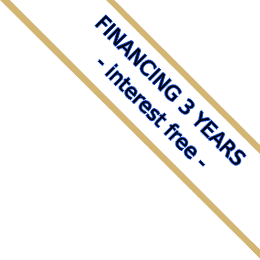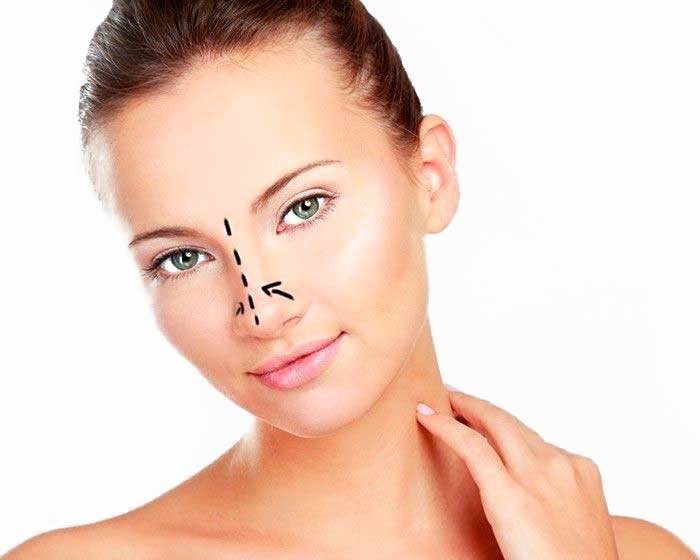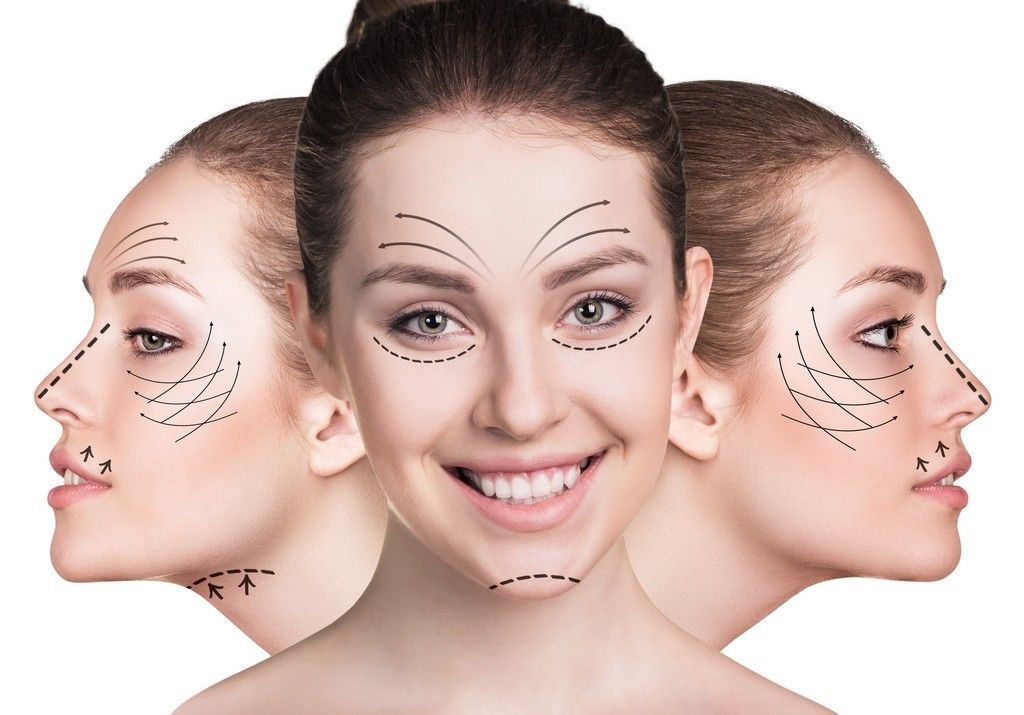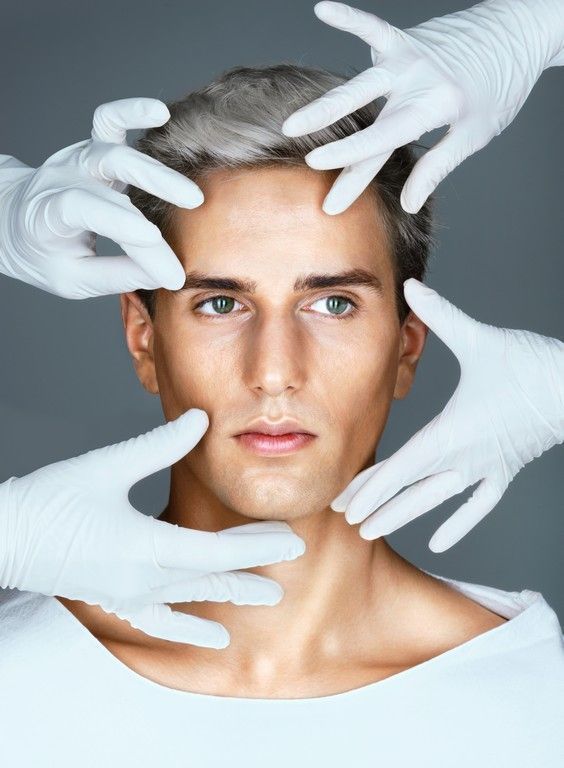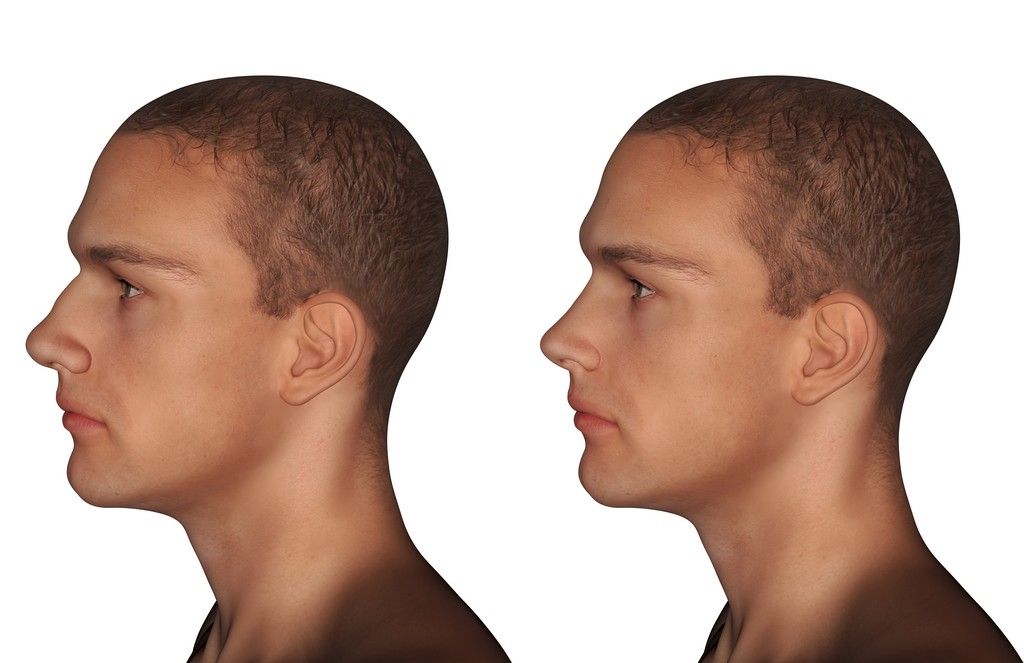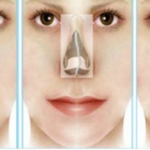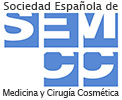Rhinoplasty surgery
English subtitled video
WHAT IS RHINOPLASTY?
The rhinoplasty performed in Clínica Sanza in Barcelona is a surgical procedure that aims to harmonize the nose with the other facial structures such as the chin, the malar area, the eyes and even the body and essence of the person.
Nowadays, cosmetic surgery no longer looks to follow a particular pattern for all noses, nor that they all look the same. This was in the past, currently, successful rhinoplasty is the one that gives the whole face a profile and an aesthetically suitable projection.
As the nose is at the center of the face and the most prominent feature, even a small well done change, can massively improve the appearance and facial aesthetics.
Clínica Sanza in Barcelona, Spain, is a centre of reference for ultrasonic rhinoplasty surgeries.
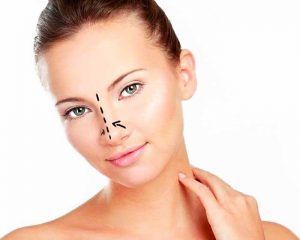
Initial Considerations
It is important to consider the patient’s age, and it is not advisable to perform cosmetic rhinoplasty until the nasal bone has completely grown. This occurs around 14 or 15 years old for women, for men slightly older.
In addition to this, we must consider realistic expectations of the nose that everyone already has, because being such an important facial feature, it may completely change the facial appearance. An exaggerated change is not recommended unless the patient desires to.
What can a Rhinoplasty surgery do for me?
There are certain features of the nose that are usually uncomfortable for many patients and can be easily corrected by a qualified plastic surgeon.
Some of the most common cases of uncomfortable features of the nose are: the bone hump, which is the bone that protrudes from the back of the nose, nasal deviations to the right or left of the nose, broad nasal tip, fallen or flat nose, congenital malformations such as cleft lip sequelae and palate; and injuries that alter in any way the physiognomy of the nose.
In all these cases, a rhinoplasty surgery can correct or improve the aesthetic appearance of unattractive features, either with a simple rhinoplasty or a complete rhinoplasty, depending on the severity of the case and the desired results.
TYPES OF RHINOPLASTY
Depending on each individual case, there are two types of rhinoplasty:
Simple Rhinoplasty
This can be done under local anesthesia or sedation on an outpatient basis. It is about improving small details of the partition, back, wide tip or fall; small details that, to fix them, turns a nose with annoying traits into a beautiful and harmonious nose with the face and the personality of the patient.
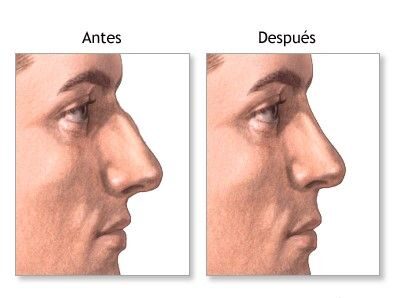
Complete Rhinoplasty
It is a more laborious intervention than the simple rhinoplasty, it is used for more complex cases, particularly for large defects of the tip or secondary rhinoplasties. Here you can access the structures of the nose through a small incision at the base of the columella. With this incision the full anatomy of the area, allows us to cut and shape the cartilage of the nasal tip setting up a new structure. We also use a complete rhinoplasty for those who also have respiratory distress.
This procedure can be done under general anesthesia or under local anesthesia with sedation.
Rhinoplasty not always has to be reductive, sometimes it can be advisable to increase its size to give more prominence to the tip, to lift the back or to correct congenital or traumatic deformities. In such cases, it may be necessary to place tissue grafts taken from the patient or a nasal prosthesis to form or support the nose.
A rhinoplasty (used to correct or improve aesthetical aspects of the nose) should not be mistaken with a septoplasty. This last procedure is used to improve the non-aesthetical respiratory function of the nose. If you have any doubts, don’t miss the below article in which all of the nasal surgeries and treatments are explained in full detail.
Click here to see the article with the differences between rhinoplasty and septoplasty.
PATIENT’S PROFILE
People that present physical nose alterations, often complex, such as, a nose that is too prominent or too flat that can sometimes cause breathing difficulties.

Book a visit
You can do it in 3 ways:
– Free on-site visit: Call +34 932066540 from Monday to Thursday from 9:00 am to 6:00 pm and Friday from 9:00 am to 3:00 pm.
– Free on-site visit with IMMEDIATE booking: For booking outside office hours. We charge 60 € on your card to avoid false bookings. It is refunded on the day you come to the consultation.
– ONLINE Visit: Video conference using whatsapp or Zoom. Cost of 60 € non-refundable. When booking indicate in the comments that you want videoconferencing and not on-site.

Book a visit
You can do it in 3 ways:
– Free on-site visit: Call +34 932066540 from Monday to Thursday from 9:00 am to 6:00 pm and Friday from 9:00 am to 3:00 pm.
– Free on-site visit with IMMEDIATE booking: For booking outside office hours. We charge 60 € on your card to avoid false bookings. It is refunded on the day you come to the consultation.
– ONLINE Visit: Video conference using whatsapp or Zoom. Cost of 60 € non-refundable. When booking indicate in the comments that you want videoconferencing and not on-site.
WHERE DO WE OPERATE?
At Clínica Sanza we rely on the Sagrat Cor Hospital, part of the Quirónsalud group, to perform our surgical procedures.
Its prestige, facilities, medical and healthcare staff, as well as its technology are a guarantee.
BARCELONA: A HEALTH HUB
Do you want to know why it is worth coming to Barcelona for plastic surgery and why so many people come from abroad?
WE ORGANIZE EVERYTHING FOR YOU
Your trip, your flight, your operation, your transfer and your hotel with our support agency. We work with the best travel agencies worldwide.
PROCEDURE
Each rhinoplasty is different and should be evaluated in all its structures. The most common approach is what is known as “closed rhinoplasty”, although “open rhinoplasty” is becoming increasingly common.
Closed rhinoplasty is practiced with an incision in the interior of the nose, in such a way that no visible external scar is visible. By these incisions the surgeon can carve and model the bones and cartilage of the nose, providing a new structure.
For more complex cases, particularly for large tip deformities, the so-called open rhinoplasty is the used technique. With this, the structures of the nose are accessed through a minimal incision at the base of the columella. This incision exposes the entire anatomy of the area, which allows us to carve and shape the cartilage of the tip of the nose more precisely by configuring the new nasal structure.
DURATION OF THE SURGERY
- From 2 to 3 hours.
PROTOCOL
Preoperative
- Area evaluation to determine appropriateness of the treatment.
- Follow specific guidelines as determined by the doctor.
- Analytics and tests on cardiac and respiratory status
Anesthesia
- Local and sedation, or general
Hospitalization
- Ambulatory or 24-hour admission.
Postoperative
- Simple rhinoplasty does not require nasal plugs or nasal splint.
- Nasal plugs and protective splint for a complete rhinoplasty.
- Removal of nasal plugs between 24h and 48h.
- Removal of nasal splint at 7 or 10 days.
- Discomfort with the nasal plugs and the splint, usually without pain.
- Medication if required.
- Mandatory revisions after a few days, a few weeks and a few months, according to prescription.
Convalescence
- You can keep on going with your life as usual, but with a splint and possible periorbicular bruises that disappear in one or two weeks.
- Try not to be at risk of impacts during one or two months.
RESULTS
- Aesthetic changes that are visible from the first instant.
- Definitive aspect is visible from the first to the third month of the intervention.
- Rejuvenated appearance.
- There is a clear psychological improvement related to the self-esteem and profile the patient has.
LEVEL OF DIFFICULTY
- Simple to medium intervention.
LEVEL OF RISK
- Low.
- Common risks the intervention can have: small asymmetries that require a nasal retouch.
- Risks of the whole intervention: hemorrhage, infection, impaired healing.
FINAL CONSIDERATIONS
Every nose is different and gives a personality to each face. If you think your nose is unattractive or there are aspects of it that you would like to improve, Clínica Sanza advises a visit to your plastic surgeon to assess your particular case and thus to assess what kind of rhinoplasty and surgical approach will be best for you.
Rhinoplasty is a surgical procedure with excellent results, which may be seen soon after surgery and also bring great satisfaction and improve self-esteem and self-image of many people.
Dr. Sanza helps many people feel good, not only outside but also inside. A good image or the desired image allows you to achieve happiness.
BEFORE/AFTER PHOTOS
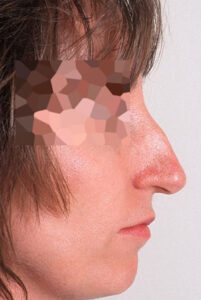
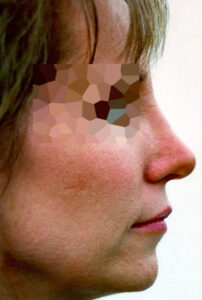
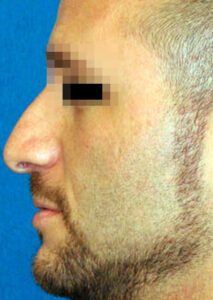

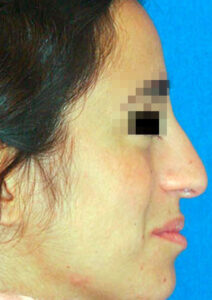
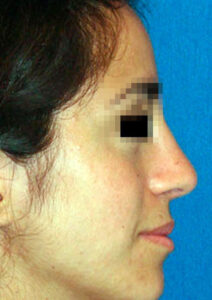
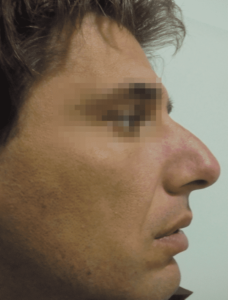
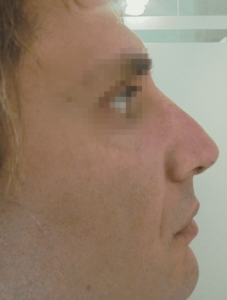
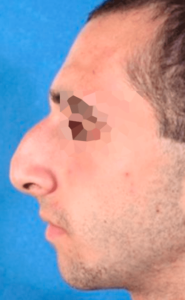
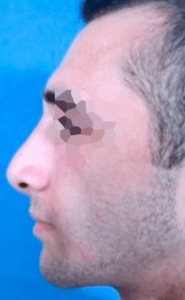
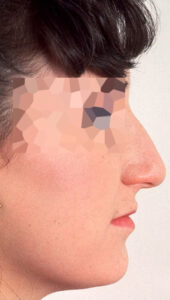
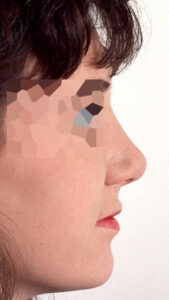
Whatever your case may be, do not hesitate in contacting us.
Clínica Sanza in Barcelona, Spain, quality service
Frequently asked questions about ultrasonic rhinoplasty
What is an ultrasonic scalpel?
The ultrasonic scalpel is made up of:
a generator, a transducer and a terminal where the different kinds of tips are placed to make different cuts.
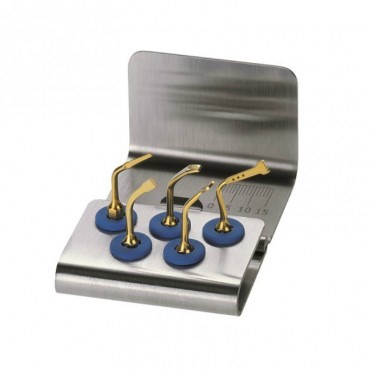
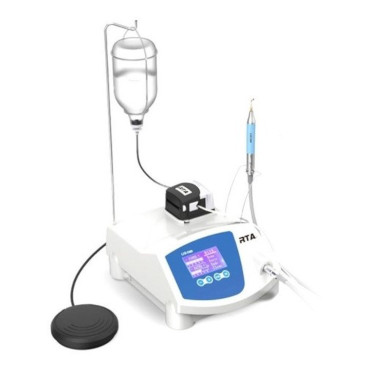
How does it work?
The cut is produced by the vibration of a high-frequency head. This vibration produces a precise cut at bone level.
Why doesn't it cut another tissues?
In conventional rhinoplasty, the bony hump (the little bone) was taken out using chisel and a hammer. This can be quite traumatic to the tissue as it can damage not only the bone but also the skin and the mucous membrane.
With ultrasonic rhinoplasty we use an ultrasonic scalpel that just cuts the bone and not the skin o mucus.
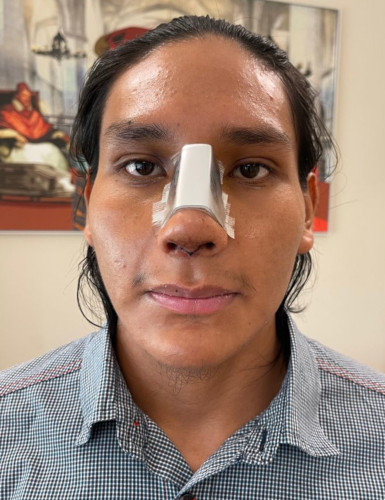
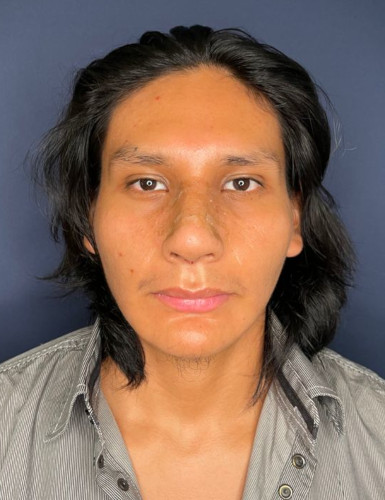
Why doesn't it cut other tissues?
It has a special vibration that coincides with the bone tissue allowing the bones to move, with minimal bleeding and regarding the skin and nasal mucus.
This is why we place the tip over the skin or mucosae, so it will not produce any effect.
Ultrasonic rhinoplasty is more precise?
It is highly precise, it does a millimetric and very precise cut, as for scars the only visible one is the one on the columella (between both nasal cavities) and then after 2-3 months it is imperceptible.
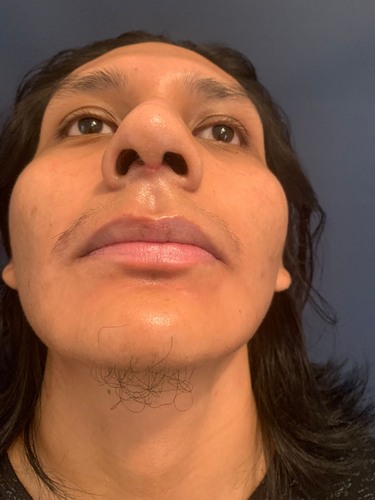
Is there less swelling?
This technique helps us to have less swelling and in consequence have less pain and less bruising. Swelling depends on different aspects: patient’s personal character, time of the year, and the medication the patient takes. But generally speaking, the ultrasonic rhinoplasty reduces the swelling remarkably.
To summarize:
- More precision, we know exactly where and when to cut. Scarring is more controlled and aimed.
- Less swelling, as tissues are preserved.
- Less pain, as there is less swelling and less trauma.
- As a consequence, recovery is much faster.
- Better results: due to a more precise and predictable technique.
Can all rhinoplasties be ultrasonic?
The treatment of the hump and lateral fractures that are always necessary can be done with an ultrasonic scalpel.
The only limitation in using the ultrasonic scalpel is that the rhinoplasty must be OPEN (with a small incision between the nasal cavities that after a few months it is imperceptible).
Can a closed rhinoplasty (without cutting between the nasal cavities) be ultrasonic?
We are developing new ends and advances that can be used in ultrasonic rhinoplasty in a closed way but it is still necessary to do a small cut in the columella (area between the blowholes) to do an correct ultrasonic rhinoplasty.
No more hammer and chisel?
The hammer and chisel so many patients fear and causes much swelling and bruises, we have left behind, increasing the patients comfort.
The use of the hammer not only causes more swelling but also a lack in precision and unsatisfying results.
In case of doing a CLOSED rhinoplasty, we will still need to use the hammer and chisel, what will cause more swelling and bruises in the beginning.
In which cases do we recommend an ultrasonic rhinoplasty?
This surgery is especially recommended for people that want:
- To improve the respiratory function
- Change the shape and look of the nose
- Increase or reduce the nose’s volume
- Elevate or lower the nasal tip
- Correct congenital (by birth) or developed (by a previous rhinoplasty or by an accident)
Is it necessary to wear nose plugs after ultrasonic surgery?
Como ya dijimos anteriormente, la posibilidad de hacer hematomas es menor. Pero si se llegan a producir desaparecerán mucho más rápido que en rinoplastias convencionales: de 7-15 días.
La inflamación también es menor, en caso de aparecer es mayor hasta la semana y luego disminuye rápidamente.
Esto hace el postoperatorio más llevadero y podrá volver mas rápido a sus tareas habituales con poca inflamación apreciable.
Algo de inflamación residual puede continuar en la zona de la punta y osteotomía hasta unos meses luego de la cirugía, por lo cual debemos tener paciencia para esperar el resultado final del procedimiento.
Is it necessary to wear nose plugs after ultrasonic surgery?
We do not use conventional plugs, we use a special silicone splint that allows us to BREATH after surgery, increasing the patient’s comfort.
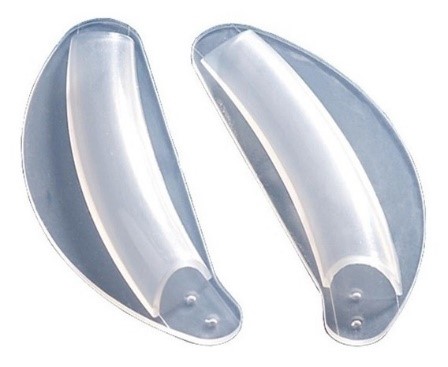
When do we take out the plaster and stiches?
The nasal splint and stiches are taken out after 7 days. Until then you must keep the stiches clean and avoid them to form a scab.
When can we exercise again?
20 days after surgery we could start with soft exercise in the lower body like bicycle or leg exercising. 30 days after we can do almost any kind of exercise: go to the gym, swimming, running.
For contact sports such as boxing, judo, basketball, soccer we should at least wait for 3 months or use some type of rigid facial protection (mask).
When can I use glasses?
You should wait at least 1 month to use glasses that rest on the nose, in case of needing them, we recommend to use contact lenses or we will explain how to hold them so they do not fall over the fractured zone.
When can I drive?
You should wait at least 20 days, ideally 1 month to drive after surgery.


